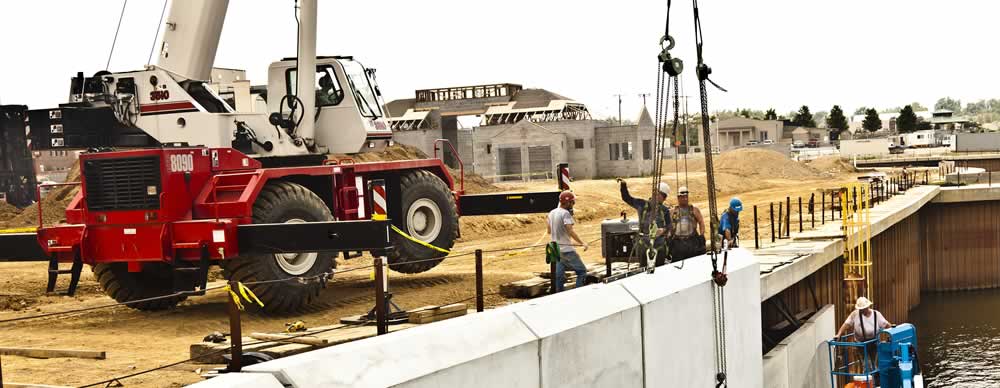Chapter Gallery of Images
What's Done, What's Next: A Civic Pact
Chapter Two:
Underlying Big Decisions,An Owensboro Operating System That Works, Mostly
by Keith Schneider
August 19, 2011
To Fund Publicly Or Not?
Publicly funded projects, which traditionally serve as cornerstones of the American economy, are not easy to build anymore. Though residents of Owensboro generally understand the logic of economic competitiveness, and accept the necessity of developing new wealth and jobs, the basic mortar of public agreement to achieve those goals is fracturing.
What’s causing conflict in Owensboro and nearly everywhere else in the United States is not simply disagreement about the government’s appropriate role in economic development but also how much, if anything, taxpayers are expected to contribute?
Even in Owensboro, where civic progress of late has been marked by public decisions to finance and embark on momentous public projects –roads, flood control, river port modernization, airport runways, higher education infrastructure, downtown development plans, ball fields that attract big tournaments, riverfront parks, and a convention center – the value that residents hold in taxpayer-financed investment is far from decided.
This is a place, after all, that more than 20 years ago was prompted by such fear of economic stagnation that it invested $100 million in taxpayer financed incentives to attract a new Scott Paper Company plant and its 350 jobs. Landing the Scott plant was widely viewed as an important boost to community morale. It occurred during a time when several major manufacturing plants had closed and unemployment was around 13 percent to 14 percent. There was a sense in Owensboro that city leaders needed to “do whatever it takes” to recruit Scott. Bumper stickers, posters in storefronts, and rallies on the riverfront were all part of the campaign and the incentive package involved state assistance as well as local government funds.
But the investment was driven by an obsolete approach to development. Over the next decade the city and county, like listless ships, bobbed on the sea of slow growth, middling new business starts, and stagnant median incomes.
Two years ago, following a burst of new thinking and energy about the value of a thriving city center to encourage new development, a good deal of it influenced by a strategic planning program initiated by the city commission, Owensboro tried again. On February 3, 2009, in a decisive moment considered either a heroic act of statesmanship or political suicide, city commissioners and the county fiscal court voted 7-2 to increase taxes on insurance policies. The vote, which came amid an ice storm and in the teeth of a grinding national recession, was meant to raise $80 million for downtown development projects, including the convention center.
“We knew it would be very unpopular,” said Haire, then the County Judge Executive. “It cost some their political careers. But I’d traveled to so many communities about the same size and seen decline. Seen some of them die. I felt that we’d join the club of communities that merely used to be. So it was either do something bold or stay with the status quo and babysit the community until deterioration set in. In a way there wasn’t a lot of choice. We had to do something significant. No doubt that downtown needed to be the target.”
Just as Haire predicted, a year later the tax increase emerged as the central issue in local elections. Of the seven officials who approved the hike, just two remain in office; two were defeated and three did not seek reelection. Both of the officials that disapproved were easily elected to the Daviess County Fiscal Court, now dominated by fiscal conservatives.
Owensboro’s capacity to generate big pools of public funding is clearly in abeyance. Reviving that tool appears almost entirely dependent on how well the downtown development project performs as a generator of new business, jobs, housing, and public excitement. The question may boil down to whether the original strategy — building a balanced package of projects — will be replaced with a much more aggressive convention center strategy.
The convention center, very plainly, is the anchor investment and will be viewed as the central metric of the new downtown’s success or failure. Certainly money is required. But success also demands a strong civic operating system capable of identifying new market opportunities, marshaling support, adjusting to unexpected events, and competently executing complex projects.
On July 20 and the days that followed Owensboro’s operating system underwent an important test.

